Subtotal: £8.71
Tropical Red Parrot Granules – Vibrant Colour & Digestive Support, Provide a Home for Thriving Parrot Cichlids with this High-Quality Tropical Fish Food, Enhances Fish Vibrancy & Health
£11.00 – £46.00
Welcome these beautiful Parrot Cichlids into your aquarium with Tropical Red Parrot Granules. This vibrant color-enhancing dry food supports their health and promotes natural beauty, ensuring your community tank thrives. Perfect for aquarists seeking quality tropical fish care.
Nutritional Overview
Essential Care Guide for Tropical Red Parrot Granules
| Optimal Living Conditions | |
|---|---|
| Water Temperature | 24-27°C (75-81°F) |
| pH Level | 6.5-7.5 |
| Water Hardness | 4-12 dKH |
| Minimum Tank Size | 80L (20 gal) |
| Salinity | Freshwater |
| Care Level | Beginner Friendly |
The Tropical Red Parrot Granules are meticulously formulated to meet the dietary needs of cichlids, particularly the vibrant parrot cichlid species. These nutrient-rich granules are designed to enhance the color and vitality of your aquatic companions while providing essential digestive support. The primary ingredients include high-quality proteins, vitamins, and minerals that are crucial for the growth and health of tropical fish. Each granule is fortified with color-enhancing elements that promote the natural hues of your fish, ensuring they thrive in a well-maintained aquarium environment. This food is not just a meal; it is a comprehensive dietary solution that supports the overall health and well-being of your fish friends.
Feeding Specifications
Feeding your cichlids the right amount of food is essential for their health and growth. For Tropical Red Parrot Granules, it is recommended to feed your fish 2-3 times a day, offering only as much food as they can consume within a few minutes. This feeding schedule helps to prevent overfeeding, which can lead to water quality issues and health problems. It is important to observe your fish during feeding times to determine their appetite and adjust the portions accordingly. Additionally, consider varying their diet with occasional treats such as freeze-dried or frozen foods to ensure a balanced nutrition profile. Remember, a well-fed fish is a happy fish!
Suitable Fish Species
The Tropical Red Parrot Granules are specifically designed for parrot cichlids, but they are also suitable for a variety of other cichlid species and tropical fish. These granules can be enjoyed by fish such as the African cichlids, Oscars, and other community tank inhabitants. When selecting tank mates, it is crucial to consider the temperament and size of the fish to ensure compatibility. The vibrant colors of the parrot cichlids will be enhanced with this food, making them a beautiful addition to your aquarium. Always ensure that the tank mates share similar water parameter requirements to maintain a harmonious environment.
Tank Mate Compatibility Guide
Great Tank Mates
- African Cichlids
- Oscars
- Other Peaceful Community Members
Avoid These Tank Mates
- Aggressive Species
- Smaller Fish That May Be Prey
Compatibility Note: Always research specific species requirements and observe fish behavior when introducing new tank mates. Individual fish personalities can vary!
Nutritional Benefits
The Tropical Red Parrot Granules offer a multitude of health benefits for your fish. The high protein content supports muscle development and overall growth, while the vitamins and minerals contribute to a robust immune system. This food is particularly beneficial for promoting vibrant coloration, ensuring that your cichlids display their natural beauty. Furthermore, the inclusion of digestive support ingredients helps to maintain gut health, reducing the risk of digestive issues that can arise from poor nutrition. By providing your fish with this premium food, you are investing in their long-term health and vitality.
Feeding Instructions
To ensure optimal health and nutrition, follow these feeding instructions for the Tropical Red Parrot Granules. Begin by introducing the granules to your fish in small amounts, observing their feeding behavior. It is important to provide a variety of food types to prevent dietary deficiencies. For best results, soak the granules in aquarium water for a few minutes before feeding, as this will make them more palatable and easier for your fish to digest. Always remove any uneaten food after a few minutes to maintain water quality and prevent pollution in your aquarium.
Storage Guidelines
Proper storage of the Tropical Red Parrot Granules is essential to maintain their freshness and nutritional value. Store the granules in a cool, dry place away from direct sunlight. It is recommended to keep the food in its original packaging, tightly sealed to prevent moisture and contaminants from entering. For long-term storage, consider using an airtight container. Always check the expiration date before use, and avoid purchasing large quantities that may not be consumed within a reasonable time frame to ensure you are providing your fish with the best quality food.
Ingredient Analysis
The ingredient list for Tropical Red Parrot Granules includes high-quality fish meal, shrimp meal, and a blend of vitamins and minerals tailored for cichlid nutrition. The primary protein source is derived from fish meal, which is essential for muscle development and growth. Additionally, the inclusion of spirulina and other natural color enhancers promotes the vibrant colors of your fish. The formulation is free from artificial preservatives and fillers, ensuring that your fish receive only the best nutrition. This attention to ingredient quality is what sets this food apart as a premium option for cichlid care.
Health Benefits
Feeding your cichlids with Tropical Red Parrot Granules can lead to significant health improvements. The balanced nutrition provided by these granules supports a strong immune system, reducing the likelihood of disease and infections. The digestive support ingredients help to maintain gut health, allowing for efficient nutrient absorption and waste elimination. Additionally, the color-enhancing properties of the food contribute to the overall vitality and appearance of your fish, making them more vibrant and lively in your aquarium. This food not only nourishes but also enhances the beauty of your aquatic companions.
Supplement Integration
For a well-rounded diet, consider integrating the Tropical Red Parrot Granules with other food types such as frozen or freeze-dried foods. This variety can help ensure that your cichlids receive a comprehensive range of nutrients. Additionally, using supplements like spirulina powder or vitamin additives can further enhance their diet and promote optimal health. When introducing new foods, do so gradually to allow your fish to adjust to the change in diet. Always monitor their health and behavior to ensure they are thriving.
Water Quality Impact
The quality of the food you provide can have a direct impact on the water quality of your aquarium. Tropical Red Parrot Granules are designed to produce minimal waste, which is beneficial for maintaining clean and clear water. However, it is still essential to perform regular water changes and monitor water parameters to ensure a healthy environment for your fish. Overfeeding can lead to excess waste and deteriorating water quality, so it is crucial to adhere to the recommended feeding guidelines. By providing high-quality food and maintaining good water conditions, you can create a thriving habitat for your cichlids.
Special Dietary Needs
Some cichlids may have special dietary needs, especially during breeding or recovery periods. During breeding, providing additional protein-rich foods can support the health of the breeding pair and their fry. If your fish are recovering from illness, consider offering easily digestible foods and supplements to aid in their recovery. Always consult with an aquarium specialist or veterinarian if you notice any health issues or if you are unsure about the dietary needs of your fish. Tailoring their diet to meet specific needs can significantly enhance their well-being.
Feeding Techniques
Utilizing effective feeding techniques can enhance the feeding experience for your cichlids. Consider using feeding rings or surface feeders to help control the feeding area and prevent food from spreading throughout the tank. This can help reduce competition among fish and ensure that all individuals receive their fair share of food. Additionally, observing your fish during feeding can provide insights into their health and behavior, allowing you to adjust feeding practices as needed. Engaging with your fish during feeding times can also strengthen your bond with them.
Quality Assurance
The Tropical Red Parrot Granules are produced under strict quality control standards to ensure that each batch meets high nutritional and safety standards. The ingredients are sourced from reputable suppliers, and the manufacturing process adheres to best practices in the industry. Regular testing is conducted to verify the nutritional content and safety of the food. By choosing this premium fish food, you can be confident that you are providing your cichlids with a safe and nutritious diet that supports their health and well-being.
Comparison Guide
When selecting fish food, it is essential to compare different options available in the market. Tropical Red Parrot Granules stand out due to their high-quality ingredients and specific formulation for cichlids. Unlike generic fish foods, these granules are tailored to meet the unique dietary needs of parrot cichlids and other tropical fish. Consider factors such as protein content, ingredient quality, and specific benefits when comparing foods. This thorough evaluation will help you make informed decisions that positively impact the health of your aquatic companions.
Expert Recommendations
Aquarium experts recommend incorporating Tropical Red Parrot Granules into your cichlid feeding routine for optimal results. These granules have been praised for their ability to enhance color and vitality while providing essential nutrients. Additionally, maintaining a varied diet with occasional treats can further support the health and happiness of your fish. Regularly monitor your fish for any changes in behavior or health, and adjust their diet as necessary. By following expert recommendations, you can ensure that your cichlids thrive in a well-balanced environment.
Nutritional Science
The formulation of Tropical Red Parrot Granules is backed by nutritional science, ensuring that your cichlids receive a balanced diet. Research indicates that a diet rich in protein and essential nutrients leads to better growth rates and overall health in cichlids. The inclusion of color-enhancing ingredients is supported by studies showing that these compounds can improve the vibrancy of fish colors. By providing scientifically formulated food, you are not only meeting the basic dietary needs of your fish but also enhancing their quality of life.
Positive Information
Care level: Easy
Important Notice
Ensure to monitor water quality regularly.
Feeding Note
Do not overfeed to maintain water quality.
Recommended for:
Cichlids and other tropical fish.
Water Quality Parameters
Optimal Range
24-27°C
6.5-7.5
0 ppm
Caution Zone
22-24°C or 27-29°C
6.0-6.5 or 7.5-8.0
0.25-0.5 ppm
Danger Zone
<22°C or >29°C
<6.0 or >8.0
>0.5 ppm
Monitoring Tip: Test water parameters weekly and perform regular water changes to maintain optimal conditions for your aquatic friends!
Frequently Asked Questions
Q: What tank size is required for Parrot Cichlids?
Parrot Cichlids are relatively large fish, requiring a minimum tank size of 75 litres (20 gallons) for a single fish. If you plan to keep multiple Parrot Cichlids, consider a tank of at least 150 litres (40 gallons) to ensure adequate swimming space and to maintain water quality. Larger tanks not only provide more room but also help in stabilising water parameters, which is crucial for their health. Remember, these fish can grow up to 25 cm (10 inches) in length, so ample space is essential for their well-being.
✓ Expert Tip
Opt for a tank with a secure lid to prevent jumps, as Parrot Cichlids can be quite active. Consider adding hiding spots using plants or decorations to make them feel secure.
Q: What water parameters do Parrot Cichlids require?
Parrot Cichlids thrive in slightly acidic to neutral water conditions, ideally with a pH between 6.5 and 7.5. The temperature should be maintained between 24°C to 28°C (75°F to 82°F). Regular water changes, approximately 10-15% weekly, will help maintain optimal water quality, reducing ammonia and nitrate levels. It is also crucial to monitor hardness, aiming for a range of 5-20 dGH. Investing in a reliable water testing kit will assist you in keeping track of these parameters, ensuring your fish friends are healthy and happy.
✓ Expert Tip
Consider using a sponge filter to maintain water quality without creating strong currents, as Parrot Cichlids prefer calmer waters.
Q: How often should I feed Parrot Cichlids?
Parrot Cichlids should be fed two to three times daily, offering only as much food as they can consume within a few minutes. A varied diet is crucial for their health; consider including high-quality granules like Tropical Red Parrot Granules, along with occasional treats such as frozen or live foods. This variety ensures they receive essential nutrients and supports their vibrant colouration. Always monitor their feeding habits to prevent overfeeding, which can lead to water quality issues.
✓ Expert Tip
Utilise a feeding ring to help keep food concentrated in one area, making it easier for your fish to feed without polluting the tank.
Q: What are the best tank mates for Parrot Cichlids?
When selecting tank mates for Parrot Cichlids, opt for species that are similarly sized and have a peaceful temperament. Suitable companions include larger Tetras, some species of Gouramis, and other Cichlids like Angelfish. Avoid smaller fish, as they may be seen as prey, and aggressive species that could stress or harm your Parrot Cichlids. Always introduce new fish gradually, ensuring that your aquarium is spacious enough to reduce territorial disputes and promote a harmonious environment.
✓ Expert Tip
Consider adding plenty of hiding spots and territories within the tank to help reduce aggression among tank mates.
Q: How do I properly acclimatise Parrot Cichlids to my aquarium?
Acclimatisation is crucial for the health of your new Parrot Cichlids. Start by floating the sealed bag in your aquarium for about 15-20 minutes to equalise the temperature. After that, gradually introduce aquarium water into the bag over the next hour by adding small amounts every 10 minutes. This process helps them adjust to differences in water chemistry. Once acclimatised, gently release the fish into the tank without adding bag water, ensuring a safe transition.
✓ Expert Tip
Avoid overcrowding during acclimatisation; if possible, use a separate quarantine tank to reduce stress.
Q: What are the signs of healthy Parrot Cichlids?
Healthy Parrot Cichlids exhibit vibrant colours, clear eyes, and active behaviour. They should swim gracefully, interacting with their environment and tank mates. Look for signs of stress or illness, such as lethargy, loss of appetite, or unusual swimming patterns. Regular observation is key; any changes in behaviour or appearance should prompt immediate investigation. Additionally, ensure their fins are intact and free of fraying or lesions, as these can indicate underlying health issues.
✓ Expert Tip
Maintain a consistent routine for feeding and water changes to help monitor their health effectively.
Q: How can I prevent common diseases in Parrot Cichlids?
Preventing diseases in Parrot Cichlids involves maintaining optimal water quality and a balanced diet. Regular water testing and changes are essential to keep harmful toxins at bay. Quarantine new fish before introducing them to your main tank to avoid potential disease transfer. Additionally, ensure your fish are not overcrowded, as stress can lead to illness. Observe your fish regularly for any signs of distress or disease, and act swiftly if issues arise, such as adjusting water conditions or consulting with an aquarist.
✓ Expert Tip
Incorporate a varied diet that includes quality granules and occasional live foods to enhance their immune system.
Q: What temperature should I maintain for Parrot Cichlids?
Parrot Cichlids thrive in warm water, with an ideal temperature range of 24°C to 28°C (75°F to 82°F). Maintaining a stable temperature is crucial, as fluctuations can stress these fish. Use a reliable aquarium heater, ensuring it is appropriately sized for your tank. Regularly check the water temperature with a thermometer to ensure it remains within the desired range. A consistent temperature not only enhances their activity levels but also supports their immune system and overall health.
✓ Expert Tip
Place the heater near a water flow source to ensure even temperature distribution throughout the tank.
Q: What type of substrate is most suitable for Parrot Cichlids?
Parrot Cichlids prefer a soft substrate, such as fine gravel or sand, which allows them to forage comfortably. Avoid sharp substrates, as they can injure their delicate bodies and fins. A natural substrate mimics their natural habitat, promoting a sense of security and encouraging their natural behaviours. Additionally, ensure that the substrate is easy to clean, as waste can accumulate in the crevices, affecting water quality. Regular siphoning during water changes can help maintain cleanliness.
✓ Expert Tip
Consider layering the substrate, using a thicker layer of sand on top of gravel for aesthetic and functional benefits.
Q: What behavioural patterns should I expect from Parrot Cichlids?
Parrot Cichlids are known for their playful and curious nature. They often exhibit strong personalities, engaging actively with their environment and tank mates. Expect them to explore their surroundings, hide in caves or plants, and occasionally display territorial behaviour, especially during breeding. Observing their interactions can be quite entertaining, as they are social fish that thrive on interaction. Providing a well-structured environment with plenty of hiding spots will help them feel secure and reduce stress.
✓ Expert Tip
Engage with your Parrot Cichlids during feeding time to enhance their socialisation and reduce shyness.
Q: How long do Parrot Cichlids typically live in captivity?
In a well-maintained aquarium with optimal conditions, Parrot Cichlids can live for 10 to 15 years. Their lifespan can be significantly influenced by water quality, diet, and overall care. Regular maintenance, including water changes and monitoring of parameters, is essential for their longevity. Additionally, a balanced diet rich in nutrients will support their health and vitality, contributing to a longer lifespan. Always be attentive to their needs to ensure they thrive in their environment.
✓ Expert Tip
Keep a detailed journal of your tank’s conditions and your fish’s health to track changes over time.
Q: Can Tropical Red Parrot Granules enhance the colour of my Parrot Cichlids?
Yes, Tropical Red Parrot Granules are specifically formulated to enhance the vibrant colours of Parrot Cichlids. The high-quality ingredients include natural carotenoids, which promote colour development and intensity. Regular feeding with this granule food not only supports their colouration but also provides essential nutrients for overall health and vitality. To achieve the best results, combine this food with a varied diet that includes live or frozen foods, ensuring a balanced intake of nutrients.
✓ Expert Tip
Observe your fish’s response to the food; if they seem particularly vibrant after feeding, you are on the right track!
| size | 250ml/100g, 1000ml / 400g, 3l / 1,2kg |
|---|

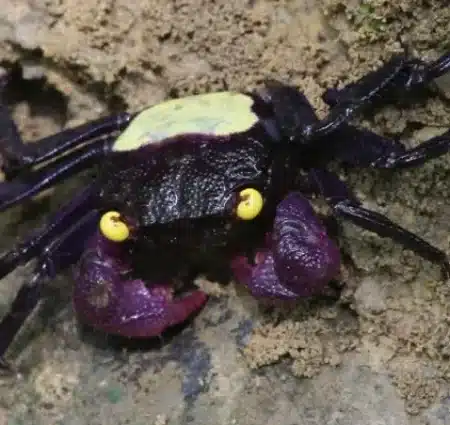 Golden Eyes Vampire Crab - Geosesarma Sp. - Decapod Crustacean
Golden Eyes Vampire Crab - Geosesarma Sp. - Decapod Crustacean 
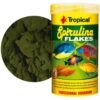
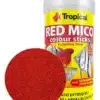









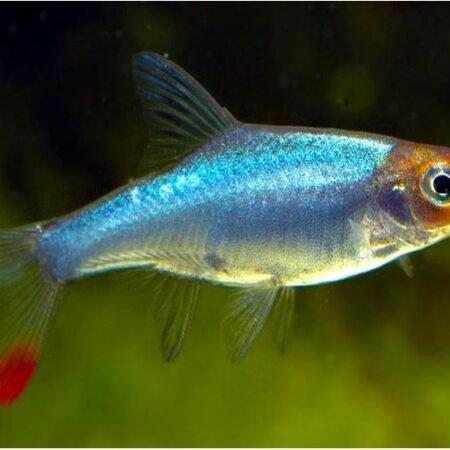
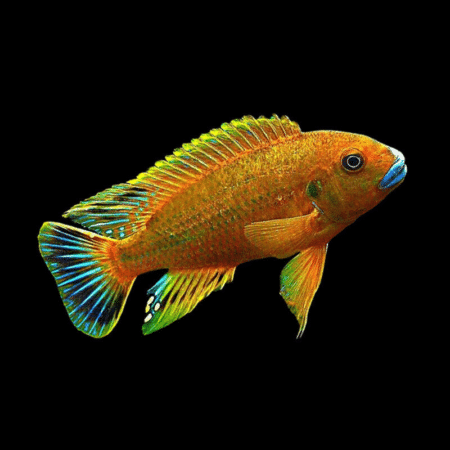
Emily Carter (verified owner) –
As a passionate aquarium hobbyist, I’m always on the lookout for food that not only supports my fish’s health but also enhances their vibrant colors. After using the Tropical Red Parrot Granules for about two months, I can confidently say this product is fantastic! My cichlids, especially my red parrots, have shown a noticeable increase in color vibrancy and overall activity. They absolutely love the taste!
Unlike the previous brand I used, which often left a mess at the bottom of the tank, these granules quickly sink and don’t cloud the water, making aquarium care so much easier. I also appreciate that the packaging is resealable, keeping the granules fresh for longer.
One tiny concern I noticed was that some of my smaller fish took a while to adjust to the granules, but eventually, they caught on. I’d highly recommend these granules for anyone with cichlids or other tropical fish. They are not just a food source; they are a significant contributor to my fish’s health and happiness. I will definitely be purchasing this again!
Elena Martinez (verified owner) –
As a passionate fish parent, I’m always on the lookout for high-quality food that supports my tropical fish’s health and happiness. After using the Tropical Red Parrot Granules for about two months, I’m thrilled with the results! Not only have my Parrot Cichlids developed stunning colors, but they also seem more energetic and playful.
These granules are perfectly sized for my fish, and they sink just right, making it easy for all of them to enjoy. I’ve noticed that their digestion has improved significantly; there’s far less waste, which is a plus for keeping my tank clean. Compared to the previous brand I was using, these granules are far superior in both nutrition and palatability.
If you’re a fellow aquarium enthusiast, I highly recommend these granules for any cichlids or tropical fish. Just ensure you don’t overfeed, as that can still lead to issues. All in all, I will definitely be purchasing again, and I’m excited to see how my fish continue to thrive with this great product!